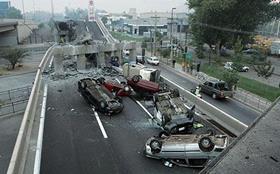
A massive earthquake registering 8.8 in magnitude on the Richter scale has caused widespread devastation to south-central Chile, killing over 200 people and counting, according to news reports.
The largest quake to hit the Andean nation in 50 years struck at 3.34am local time on Saturday 27 February close to the town of Parral, which lies around 115km north-east of Chile’s second city Concepción.
Extensive damage has been recorded as far as the capital Santiago (325km to the north-east of Concepción), where the international airport has been closed for at least 24 hours.
Tremors were reportedly felt all the way from Valparaíso in the V region (north of Santiago) all the way south to the IX region in Araucanía, causing widespread damage to buildings, bridges and roads.
This entire area of Chile is a major production zone for table grapes, blueberries, apples, pears, citrus, kiwifruit, cherries and avocados, among other fruits.
The central regions are also home to a number of ports including Chile's leading fruit hubs Valparaíso and San Antonio Este, as well as smaller facilities in Bíobío.
The extent of damage to the country’s fruit industry is still unclear.
“The earthquake has affected the main production area for fruit in Chile,” Andrew Wallace of Chilean exporter San Clemente told Fruitnet.com. “It’s still too soon to have a clear picture but we should be able to see the impact of the damage within the next 24 hours.”
Mr Wallace, who is based in the UK, said he believes a number of ports in Chile may also have been closed, adding that he is still trying to reach some colleagues in the country.
Internet communications are currently down and many national news websites and radio stations are still inaccessible.
Tsunami warnings have been issued for Hawaii, Australia, New Zealand, Central America and Pacific island nations.
“Serious damage” from tsunami waves has already been reported on the southern Juan Fernández Islands, which lie roughly 400 miles off the coast of Chile. Residents on Easter Island are also being evacuated to higher land.
Reports indicate that tremors were also felt across the Andes in neighbouring Argentina, in regions including Mendoza and parts of the capital Buenos Aires.



